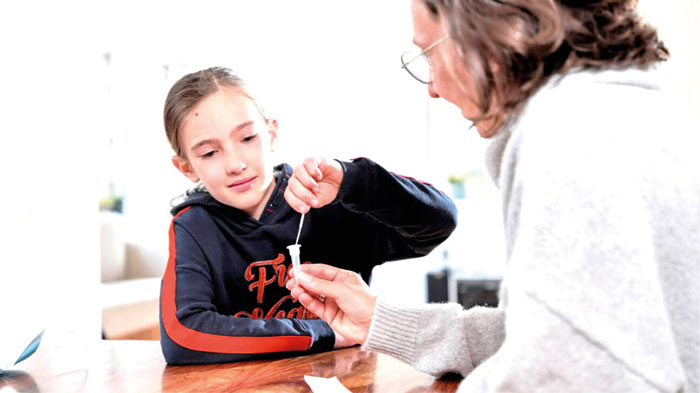According to researchers, the accuracy of the rapid antigen tests is already “highly variable” in adults, and frequently much lower than claimed by manu-facturers.
The findings indicated that among asymp-tomatic children, diagnostic sensitivity was about 56 percent. While we rely on lateral flow tests (LFT) to know when to isolate from others, recent research published in the journal BMJ Evidence-Based Medicine suggests these tests may not perform as well in children.
According to researchers, the accuracy of LFTs, also called rapid antigen tests, is already “highly variable” in adults and frequently much lower than claimed by manufacturers. Researchers analyzed research databases and preprint servers for studies published between 2020 and May 2021 that compared the accuracy of lateral flow antigen tests with PCR tests (considered the gold standard) in children.
They found 17 relevant studies that involved 6,355 children and 8 antigen tests from 6 brands. Data from these studies were combined to determine their diagnostic sensitivity and specificity. Sensitivity was defined as how well a test detected disease or infection, while specificity was how well a test iden-tified people who had not contracted the virus. Ac-cording to the findings, the overall sensitivity of the evaluated tests was about only 64 percent.
Researchers then restricted their analyses to children with symptoms and without. They found that in symptomatic children, LFTs detected infection at about 72 percent of cases, based on 3,413 children in 13 studies. “Sensitivity estimates of antigen tests varied broadly among studies and were substantially lower than reported by manufacturers,” the study authors wrote. “With symptoms, the sensitivity rose a little bit to 72 percent and again, the specificity if the test was positive was pretty good at 99 percent,” Dr. Robert G. Lahita, director of the Institute for Autoimmune and Rheumatic Disease at Saint Jo-seph’s Health and author of “Immunity Strong,” told Healthline. They noted that the intended use of most tests is for symptomatic people, so performance data reported by manufacturers typically refer only to those with symptoms.
The findings indicated that diagnostic sensitivity was just over 56 percent among asymptomatic children, based on 2,439 children in 10 studies. Lahita explained that the intended use of most tests is limited to people with symptoms and emphasized, “Why get a test if you have no symptoms?” “Because even if you get the test, you’re not sure that you do or don’t have the disease,” he said.










